1. Rh catalyzes methane to methanol or acetic acid
(Mild oxidation of methane tomethanol or acetic acid on supported isolated rhodium catalysts)
An efficient and straightforward method for the catalytic conversion of methane to liquid methanol and other oxygenates has great practical value. However, this problem has not been solved in the catalytic process because it often involves expensive or corrosive oxides or reaction media and thus cannot be commercialized. Although molecular oxygen can be used to directly convert methane to methanol under mild conditions in the gas phase, this process is either stoichiometric (hence, requires a water extraction step) or is too slow and the yield is low enough to be practical. Shan et al. have shown that in aqueous solution, mononuclear Rh attached to mullite or TiO2 support can directly catalyze methane to methanol and acetic acid under mild conditions using oxygen and carbon monoxide. They found that the two products can be formed by independent, independent pathways, which can be adjusted for conversion: batch reactor testing at 150 degrees Celsius for up to three hours, using mullite or TiO2 supported catalysts to produce about 22,000 per gram of catalyst. Micromolar acetic acid or 230 micromoles of methanol with a selectivity of 60-100%. These unusually high activities are expected, although they can be ignored for commercial applications, but may lead to the development of catalysts that directly convert methane to methanol, acetic acid and other chemicals. (Nature DOI: 10.1038/nature24640)
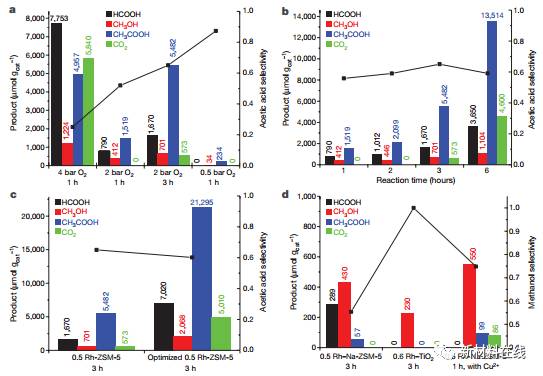
2. Electroplating and stripping of Ca in organic electrolyte
(Selective increase in CO2 electroreduction activity at grain-boundary surface terminations)
Changing the catalytic properties of the material requires determining the structural features that produce the active surface. By stabilizing the grain boundaries in the grain boundaries of the dislocation polycrystalline material, it is possible to provide a high energy surface to become the catalytic surface. Although grain boundary density was previously associated with the catalytic activity of certain reactions, there is no direct evidence. Mariano et al., using a combination of bulk electrochemical materials and scanning electrochemical microscopy with micron resolution, showed that the termination region of the boundary surface of gold has higher activity than the surface of the grain when CO2 is electrically reduced to CO, but The hydrogen evolution reaction has no comparable activity. The catalytic properties of the grain boundaries are comparable to the strain fields caused by dislocations, providing a strategy for studying the effects of heterogeneous catalysis in the middle. (Science DOI: 10.1126/science.aao3691)

3. Numerical evidence of fluctuation fringes in high Tc cuprate superconductor under normal conditions
(Numerical evidence of fluctuating stripes in the normal state of high-Tc cuprate superconductors)
In the case of doping, Mott insulators often exhibit symmetrical breaks in which carriers and their spins form a striped pattern. For high transition temperature cuprate superconductors, such streaks are widely suspected to be in the form of fluctuations. Huang et al. used numerically exact determinant quantum Monte Carlo calculations to demonstrate the dynamic strip correlation in the three-band Hubbard model, where the three-band Hubbard model represents the local electronic structure of the copper-oxygen plane. The results obtained are valid for different parameters, cluster sizes and boundary conditions, and these results support the interpretation of experimental observations, such as the relationship between hourglass-like magnetic dispersion and the masculinity of the wave fringes in a disproportionate Yamada diagram. These findings provide a different perspective for the interlaced ordering of the normal state of copper. (Science DOI: 10.1126/science.aak9546)

4. Spectral characteristics of interacting photon localization in superconducting qubits
(Spectroscopic signatures of localization with interacting photons in superconducting qubits)
The quantized eigenvectors and their associated wave functions provide extensive information for predicting the physical properties of quantum multibody systems. Roushan et al. used a chain of nine superconducting qubits to implement a technique for solving the interaction photon energy levels. This method was benchmarked by capturing in the magnetic field the main feature used to predict the complex energy spectrum of two-dimensional electrons, the Hofstadter butterfly. And introduces disorder to study the energy level statistics of the system from the heating to the localization stage. This work introduces multi-body spectroscopy techniques to study the quantum phase of matter. (Science DOI: 10.1126/science.aao1401)
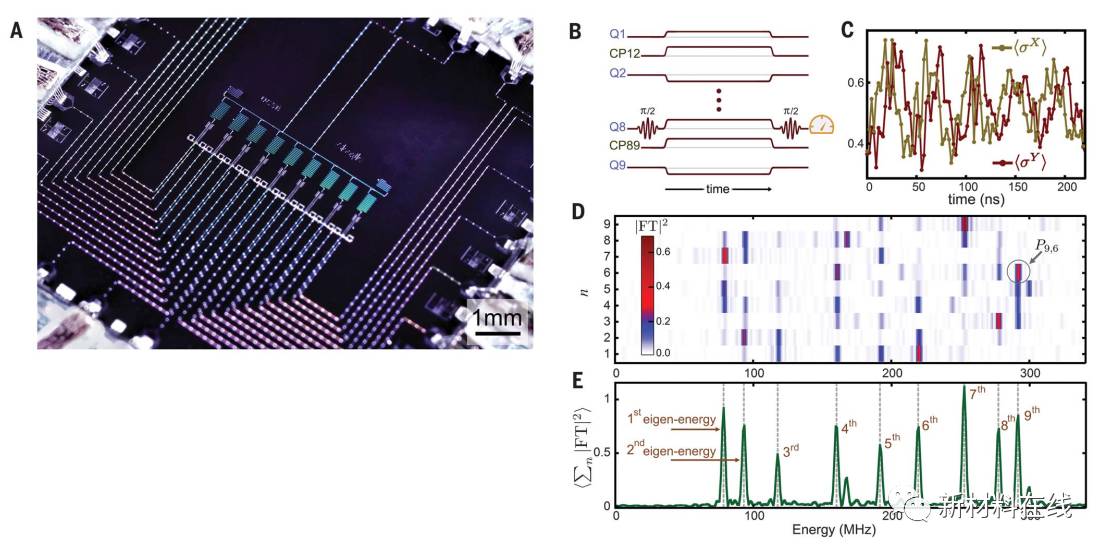
5. A common interface that reduces the gap between efficiency and stability and cost in perovskite solar cells
(A generic interface toreduce the efficiency-stability-cost gap of perovskite solar cells)
Thin-film solar cells based on mixed organic lead halide perovskites are delayed in further commercialization, and the main bottleneck is the interface loss in advanced devices. Hou et al. proposed a general-purpose interface architecture that combines solution processing, robust, and cost-effective hole transport materials that do not affect the efficiency, stability, or scalability of perovskite solar cells. Sex. The yttrium-doped tungsten oxide (Ta-WOx)/conjugated polymer multilayer film has a surprisingly small interface barrier and is capable of forming quasi-ohmic contacts with various expandable conjugated polymers. In a simple device with a conventional planar structure and a self-assembled monolayer, Ta-WOx-doped interface-based perovskite solar cells can achieve a maximum efficiency of 21.2% and maintain light stability for more than 1000 hours. By eliminating additional ion dopants, these findings enable the entire class of organics to be used as expandable hole transport materials for perovskite solar cells. (Science DOI10.1126/science.aao5561)

6. Chiral liquid crystal colloid
(Chiral liquid crystal colloids)
Colloidal particles can interfere with the alignment of the rod-like molecules of the liquid crystal, causing long-range interactions to minimize the free energy of the twisted regions. It is known that particle shape and topology guide this self-assembly process. However, the chirality of these long-range interacting colloidal inclusions remains unclear. Yuan et al. used aperture, particle tracking and optical imaging to study the effects of chiral springs and spirals on self-organized distortion in nematic liquid crystal colloids. The chirality of the colloidal particles interacts with the nematic elasticity, thereby predefining the chiral or racemic colloidal superstructure in the nematic colloid. These findings are consistent with numerical simulations based on the reduction of free energy of Landau-Denner. This study reveals the role of chirality in defining the mesoscopic order of liquid crystal colloids, suggesting that this feature may be a potential tool for regulating overall directed self-organization in these systems. (Nature Materials DOI: 10.1038/NMAT5032)
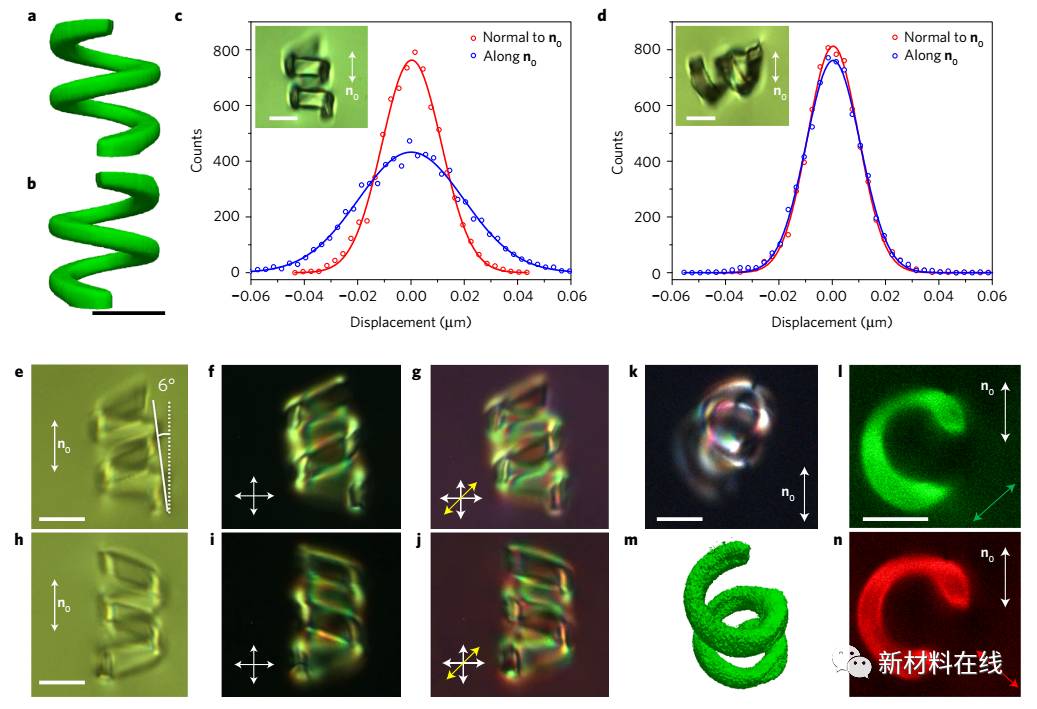
7. Atomic segregation promotes dislocation nucleation
(Dislocationnucleation facilitated by atomic segregation)
Surface segregation (enlargement of an element on the surface of a material relative to the bulk material) is ubiquitous in multicomponent materials. Taking Cu-Au solid solution as an example, Zou et al. demonstrated compositional changes caused by surface segregation, accompanied by mismatch stresses and dislocations formed in subsurface regions by surface diffusion and capture processes. The resulting chemically ordered surface region acts as an effective barrier to suppress dislocation quenching of the free surface. Zou et al. used the observation and theoretical modeling of atomic-scale resolution dynamic electron microscopy to demonstrate the high activity of dislocations and to describe the nucleation, sliding, climbing, and quenching associated with dislocations during elevated temperatures. A specific atomic scale mechanism. These observations provide mechanistic details of how nucleation and migration of dislocations at heterointerfaces in heterogeneous material systems. (Nature Materials DOI: 10.1038/NMAT5034)
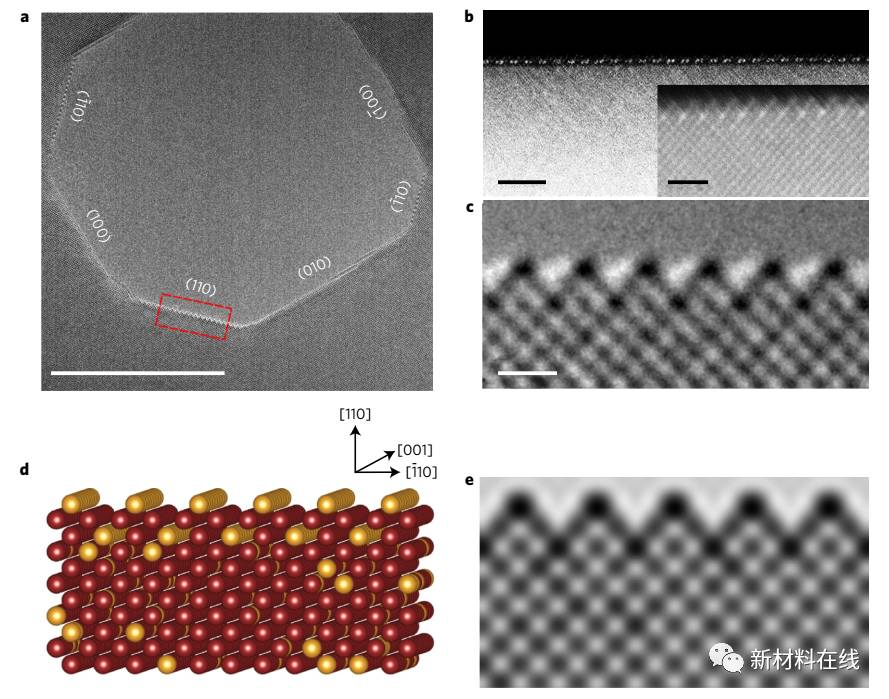
8. Electroplating and stripping of Ca in organic electrolyte
(Plating and stripping calcium in an organic electrolyte)
Multivalent cation batteries, such as those based on Mg, Ca and Al, have attracted a lot of interest from researchers. A lot of attention is focused on the Mg battery. In these examples, the metal negative electrode is very challenging. Recent studies have shown that Ca can be plated or stripped, but only at high temperatures, about 75-100 oC, with a small capacity of about 0.165 mAh/cm2, with many side reactions. Wang et al. showed that Ca can be electroplated and stripped at room temperature and exhibit a capacity of 1 mAh/cm 2 at a magnification of 1 mA/cm 2 and a polarization of only 100 mV after 50 cycles. The main production of the reaction is Ca, accompanied by a small amount of CaH2 produced by the reaction of the electrolyte with Ca. This is superior to the CaCO3, Ca(OH)2 and calcium alkoxides formed in most electrolytes, as these products typically terminate the electrochemical reaction. CaH2 is capable of protecting Ca metal under open circuit. Although this work failed to solve the problems of Ca as a negative electrode in a calcium ion battery, it showed that Ca can be electroplated and peeled off at low polarization at room temperature.
(Nature Materials DOI:10.1038/nature24640)
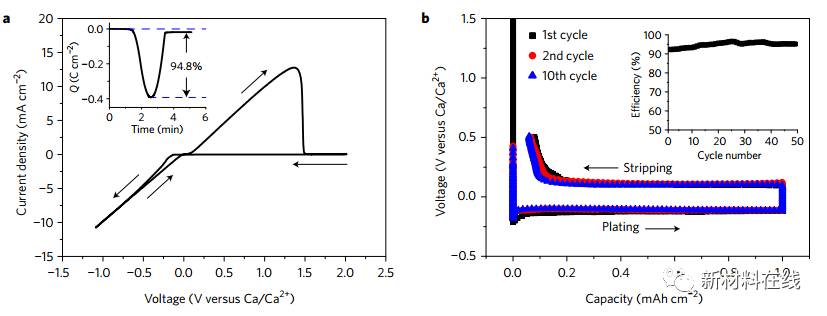
Strong & rigid and suitable for chemical engineering
UV-protected, Anti-chemical corrosion
Excellent Fire Retardation
Good dielectric strength
Non-deformation, aging-resistant, color fastness
Safety, innocuous for man's body
Two sides PE protection film is available upon request
Polycarbonate Flat Film,0.5Mm Polycarbonate Film,Greenhouse Polycarbonate Film,Transparent Polycarbonate Film
Suzhou Demine Plastic Co.,Ltd , https://www.demineplastics.com